The Top 9 Open Source Development Tools and Platforms

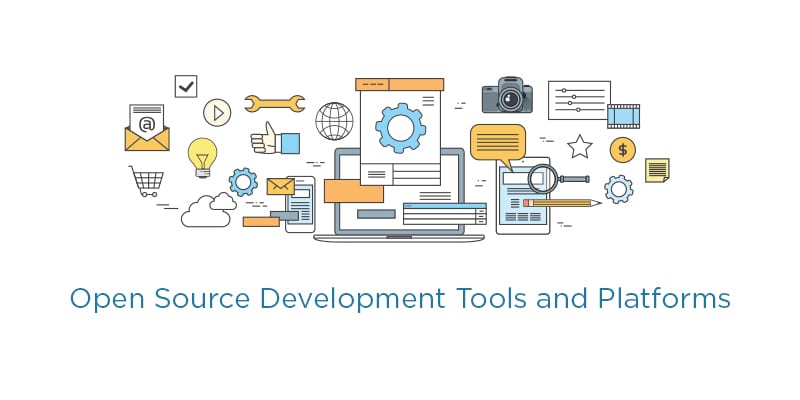
Choosing the appropriate open source development tools for your IT department can be an overwhelming decision. Application leaders must choose from a variety of features, integrations, hardware and software compatibility, and more. In order to help you pick an appropriate solution, we’ve compiled a list of 9 different open source development tools available for businesses. Other open source enterprise software tends to be offered at different price points, with their community accessible version offered for free. Open source development tools are unique in that they are built by and for developers, as opposed to being developed for profit. Every tool on this list is available in full capacity for free, and users will have access to source code, user guides, and more.
Git
 Git is an open source distributed version control system designed to handle both small and large projects. Its unique branching model allows users to create multiple local branches that are completely independent. Branches can easily be created, merged, or deleted. This allows for smooth context switching, role-based code lines, feature-based workflows, disposable experimentation, and more. Users can pick and choose which branches to push to a remote repository, and can easily exchange or delete certain releases. Git is used by companies such as Google, Facebook, Microsoft, Twitter, LinkedIn, and more.
Git is an open source distributed version control system designed to handle both small and large projects. Its unique branching model allows users to create multiple local branches that are completely independent. Branches can easily be created, merged, or deleted. This allows for smooth context switching, role-based code lines, feature-based workflows, disposable experimentation, and more. Users can pick and choose which branches to push to a remote repository, and can easily exchange or delete certain releases. Git is used by companies such as Google, Facebook, Microsoft, Twitter, LinkedIn, and more.
Eclipse IDE
 Eclipse is a comprehensive Java-focused IDE with support for multiple languages: developers can work in Java, JavaScript/TypeScript, C/C++, PHP, Rust, and more. It comes with a worskpace, and users can install plug-ins to customize their environment and experience. The platform can also work with typesetting languages such as LaTeX, and networking applications like telnet and database management systems. Additionally, Eclipse supports development for server, web tool, and modeling platforms. Users have access to over a hundred different community uploaded projects, and can upload their own work.
Eclipse is a comprehensive Java-focused IDE with support for multiple languages: developers can work in Java, JavaScript/TypeScript, C/C++, PHP, Rust, and more. It comes with a worskpace, and users can install plug-ins to customize their environment and experience. The platform can also work with typesetting languages such as LaTeX, and networking applications like telnet and database management systems. Additionally, Eclipse supports development for server, web tool, and modeling platforms. Users have access to over a hundred different community uploaded projects, and can upload their own work.
Apache NetBeans
 Apache NetBeans is an open source IDE that allows developers to create desktop, mobile, and web applications with Java, JavaScript, HTML5, PHP, C/C++, and more. Accessible across platforms, NetBeans highlights source code syntactically and semantically, and allows users to quickly refactor code. With NetBean’s open source nature, users can file issues and bug reports, and can also submit version pull requests. Users also have access to the Wiki, documentation, and community support.
Apache NetBeans is an open source IDE that allows developers to create desktop, mobile, and web applications with Java, JavaScript, HTML5, PHP, C/C++, and more. Accessible across platforms, NetBeans highlights source code syntactically and semantically, and allows users to quickly refactor code. With NetBean’s open source nature, users can file issues and bug reports, and can also submit version pull requests. Users also have access to the Wiki, documentation, and community support.
Ruby on Rails
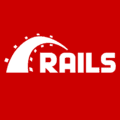 Ruby on Rails, also known as Rails, is an open source web application framework. It is an MVC framework that provides structures for databases, web services, and web pages. It encourages the use of JSON, XML, HTML, CSS, and JavaScript. Rails’ features, such as seamless database table creations, migrations, and scaffolding of views, sets it apart form other web app development technology. Rails is currently used by companies such as Airbnb, GitHub, Shopify, and Hulu; over 1.2 million websites are running on Rails.
Ruby on Rails, also known as Rails, is an open source web application framework. It is an MVC framework that provides structures for databases, web services, and web pages. It encourages the use of JSON, XML, HTML, CSS, and JavaScript. Rails’ features, such as seamless database table creations, migrations, and scaffolding of views, sets it apart form other web app development technology. Rails is currently used by companies such as Airbnb, GitHub, Shopify, and Hulu; over 1.2 million websites are running on Rails.
Apache Cordova
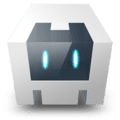 Apache Cordova is a mobile application development framework. It allows developers to build mobile applications using CSS3, HTML5, and JavaScript. This platform is unique in that it allows developers to mix native and hybrid code snippets, meaning that applications created are neither entirely mobile-based nor web-based. Apache Cordova’s open source nature allows for the use of wrappers such as Appery.io or Intel XDK. Users can use their code across various platforms, and can access the framework in offline scenarios.
Apache Cordova is a mobile application development framework. It allows developers to build mobile applications using CSS3, HTML5, and JavaScript. This platform is unique in that it allows developers to mix native and hybrid code snippets, meaning that applications created are neither entirely mobile-based nor web-based. Apache Cordova’s open source nature allows for the use of wrappers such as Appery.io or Intel XDK. Users can use their code across various platforms, and can access the framework in offline scenarios.
Bootstrap
 Bootstrap is a front-end component library used for building responsive, mobile-first projects on the web. Developers can work in HTML, CSS, and JS, and have access to jQuery plugins, Sass variables and mixins, prebuilt components, and more. Bootstrap contains CSS and JS-based design templates for buttons, typography, forms, navigation, and other interface components or projects. Bootstrap is designed for simplifying the development of informative web pages, and its primary purpose is to affect the color, size, font, and layout of web projects.
Bootstrap is a front-end component library used for building responsive, mobile-first projects on the web. Developers can work in HTML, CSS, and JS, and have access to jQuery plugins, Sass variables and mixins, prebuilt components, and more. Bootstrap contains CSS and JS-based design templates for buttons, typography, forms, navigation, and other interface components or projects. Bootstrap is designed for simplifying the development of informative web pages, and its primary purpose is to affect the color, size, font, and layout of web projects.
GNU Emacs
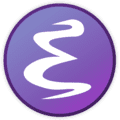 Emacs is a customizable, cross-platform, real-time display editor. It includes built-in documentation and a tutorial for new users. Emacs comes with full Unicode support, content-aware editing modes, a packaging system for downloading and installing extensions, and more. Emacs also comes with unique features including a project planner, mail and news reader, debugger interface, and calendar. Users have full access to additional documentation, Emacs wiki, history, and other product information on the GNU website.
Emacs is a customizable, cross-platform, real-time display editor. It includes built-in documentation and a tutorial for new users. Emacs comes with full Unicode support, content-aware editing modes, a packaging system for downloading and installing extensions, and more. Emacs also comes with unique features including a project planner, mail and news reader, debugger interface, and calendar. Users have full access to additional documentation, Emacs wiki, history, and other product information on the GNU website.
Brackets
 Brackets is an open source text editor with focused visual tools and preprocessor support. Brackets is focused on making it easy to design and create projects in browser, and is crafted for web designers and front-end developers. Users can work in JavaScript, HTML, and CSS, and can access the program from macOS, Windows, and Linux platforms. Features include quick edit, quick docs, live preview, JSLint, LESS support, and more. Users can incorporate various extensions, and have full access to an online API.
Brackets is an open source text editor with focused visual tools and preprocessor support. Brackets is focused on making it easy to design and create projects in browser, and is crafted for web designers and front-end developers. Users can work in JavaScript, HTML, and CSS, and can access the program from macOS, Windows, and Linux platforms. Features include quick edit, quick docs, live preview, JSLint, LESS support, and more. Users can incorporate various extensions, and have full access to an online API.
Atom
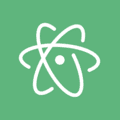 Atom is a greatly customizable text editor meant to easily integrate with other commonly used developer tools. Features include cross-platform editing, built-in package manager, smart auto-completion, and a file system browser. Additionally, customize your work environment with open source packages, themes, as well as UI and source code alteration. Integrations include functionalities like Teletype, which allows users to collaborate with other developers in real time, and GitHub, which allows for in-app branch creation, software update pushes and pulls, and much more.
Atom is a greatly customizable text editor meant to easily integrate with other commonly used developer tools. Features include cross-platform editing, built-in package manager, smart auto-completion, and a file system browser. Additionally, customize your work environment with open source packages, themes, as well as UI and source code alteration. Integrations include functionalities like Teletype, which allows users to collaborate with other developers in real time, and GitHub, which allows for in-app branch creation, software update pushes and pulls, and much more.
- The 6 Best Application Development Podcasts You Should Be Listening To - February 21, 2020
- The 4 Best Application Development TED Talks for Practitioners - February 19, 2020
- The Best Application Development Events and Conferences to Attend in 2020 - February 13, 2020




















